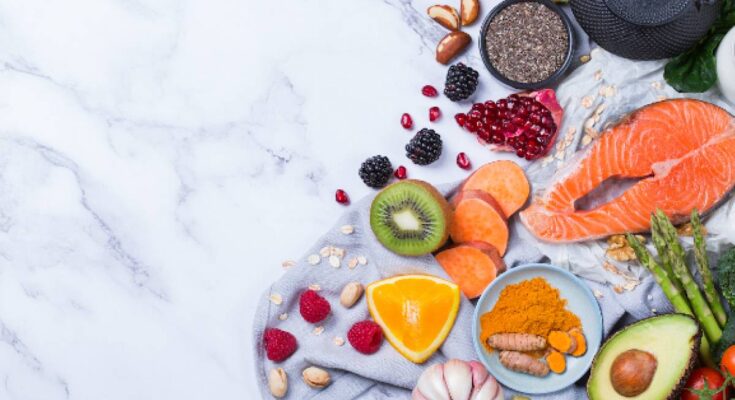Like cholesterol, triglycerides are lipids that the body needs. Stored in adipose tissue, they are an important energy reserve, but when too high, cardiovascular risks increase.
What are triglycerides?
Triglycerides are fat molecules that are produced in excess by the liver if there is excess weight or an unbalanced diet. Excess triglycerides are dangerous for the heart and arteries and can cause stroke or myocardial infarction.
Therefore, regardless of cardiovascular risk, it is recommended to perform a lipid profile starting at age 40 in men and before starting hormonal contraception or at the time of menopause in women.
What are normal triglyceride levels? At what level should we be concerned?
According to the American Heart Association (AHA), triglyceride levels should not exceed 1.7 mmol/L or 1.5 g/L. Above 2 g/L, the risk of complications increases and, from 4 g/L onwards, the risk of pancreatitis is three times higher than in the general population.
What causes increased triglycerides? What causes hypertriglyceridemia?
In contrast to cholesterol, which often increases when you consume foods rich in saturated fats (fatty meats, cheese, cured meats…), the increase in triglycerides is related to the consumption of sweet products: fruit juices, fruit, carbonated drinks and alcohol.
Some young patients have high triglyceride levels due to excessive consumption of carbonated drinks. These processed drinks generally contain glucose-fructose syrup which contributes to the buildup of triglycerides in the body.
In the long term, this can even lead to non-alcoholic fatty liver disease, better known as fatty liver disease or “soda disease.” In Italy, it is estimated that nearly 20% of the population, or 10 million people, suffer from non-alcoholic fatty liver disease. This silent disease mainly affects overweight people and people with type 2 diabetes.
Triglycerides: how to measure them?
Triglyceride levels are measured with a simple blood test, it is one of the blood markers that is analyzed very easily and regularly. Blood tests must be done on an empty stomach, meaning do not eat or drink anything (except water) for 12 hours before the test.
What foods should be avoided in case of hypertriglyceridemia? What diet to follow?
If hypertriglyceridemia occurs, foods rich in sugar should be avoided. Patients should be educated to avoid excessively sweet fruit, fruit juices, carbonated drinks and alcohol and limit foods with a high glycemic index (white bread, potatoes, etc.).
In addition, it is necessary to rebalance your diet in general and review the volume of food consumed at each meal, improve snacks, adopt a Mediterranean diet, which is the best prevention of cardiovascular diseases.
Walnuts, almonds, oily fish: what foods are best for lowering high triglyceride levels?
To lower triglyceride levels it is recommended to adopt a Mediterranean diet:
- increase consumption of vegetables and whole grains;
- reduce meat consumption, especially red meat and prefer white meat (chicken, turkey, etc.);
- prefer oily fish rich in omega-3 (salmon, sardines, etc.);
- consume legumes (lentils, chickpeas, etc.) to replace animal protein;
- use olive oil for cooking instead of butter or cream;
- eat snacks with oily seeds: walnuts, hazelnuts, pistachios, almonds.
According to a meta-analysis published in the American Journal of Clinical Nutrition, consuming pistachios and nuts (such as pecans) rich in omega-3 will help lower blood lipid levels, especially triglycerides.
Finally, apart from a balanced diet, it is recommended to regularly do physical activity (walking, running, cycling, swimming) for at least 30 minutes a day.
What Vegetables Should You Eat If You Have High Triglycerides?
You can eat as many vegetables as you want if you have high triglyceride levels. You should be careful with fruits rich in fructose, such as apples. For a certain period of time, it is best to choose fruits with lower carbohydrate content, such as strawberries, raspberries, blueberries, melon or watermelon in summer and citrus fruits, kiwi or pomegranate in winter. Most importantly, you should avoid fruit juices (eat whole fruit!), sugary drinks such as carbonated drinks and alcohol.
What kind of meat to eat with high triglyceride levels?
As part of the Mediterranean diet, it is recommended to consume white meat (chicken, turkey, pork), fish (salmon, mackerel, etc.) and seafood. You can also consume cheese and dairy products in reasonable amounts.
Should we reduce alcohol consumption?
It is also recommended to reduce alcohol consumption and stop smoking. Smoking is a cardiovascular risk factor because it increases the risk of atherosclerotic plaque formation due to cholesterol or triglyceride abnormalities.
What is the treatment for hypertriglyceridemia?
Treatment of hypertriglyceridemia is mainly based on lifestyle changes and the implementation of hygiene and dietary measures: resumption of regular physical activity, weight loss and adoption of a balanced diet.
After three months, another blood sample is taken and if the levels start to fall, lifestyle and diet measures are resumed and the blood test is repeated six months later.
If this correction is not enough, the doctor will prescribe lipid-lowering drugs that lower triglycerides: statins or fibrates in case of severe hypertriglyceridemia. In most cases, returning to a healthy weight and following a balanced diet can resolve 80% of dyslipidemia.



